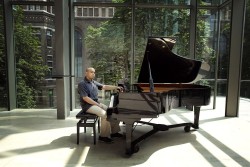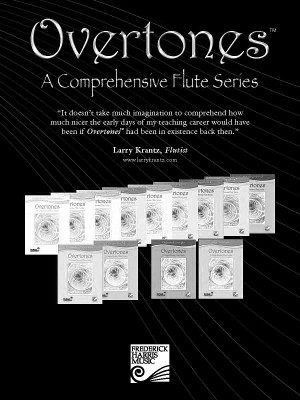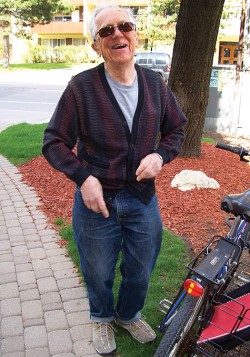The Digital Revolution: New Options for the Record Buyer
 MY FRUSTRATIONS WITH trying to buy classical recordings in stores in recent years prompted me to write this article. In the few remaining retail outlets with their dwindling supplies there is hardly any stock other than the latest issues which are not necessarily the best. If you are looking for something from the past, highly rated in the Penguin Guide, you’ll encounter blank stares and perhaps a waiting period of nine weeks and top prices for special orders. Fortunately, there are now a number of alternatives for the savvy shopper.
MY FRUSTRATIONS WITH trying to buy classical recordings in stores in recent years prompted me to write this article. In the few remaining retail outlets with their dwindling supplies there is hardly any stock other than the latest issues which are not necessarily the best. If you are looking for something from the past, highly rated in the Penguin Guide, you’ll encounter blank stares and perhaps a waiting period of nine weeks and top prices for special orders. Fortunately, there are now a number of alternatives for the savvy shopper.
➊ ONLINE SHOPPING: Biggest and best of these is the giant Amazon.com of Seattle, Washington and its Canadian counterpart Amazon.ca. Amazon started in 1994 as an online bookstore but soon expanded into CDs, DVDs, MP3 downloads, software, video games, electronics and what have you. They have an amazing catalogue of new and used classical CDs and DVDs. Anything you are looking for is easy to find with the site’s simple search function which will provide you all the different issues for the piece you want. As Amazon is a large blanket for many sellers all over the world, called the Marketplace, the prices are very competitive and the item will arrive within two weeks or so in perfect condition. Although shipping is extra, there are no taxes and generally you’ll pay less, not to mention the satisfaction of getting something you cannot find elsewhere.
Another alternative is Ebay which operates on the same principle except it is an
auction site. Here you can submit a low bid on a set of discs and if there is not much interest, you can wind up paying next to nothing. Or there can be a real battle at the end for the item and it can be quite exciting. They also have a tremendous selection of CDs and DVDs and generally you cannot lose.
A good local option is grigorian.com. Harmik Grigorian founded his Atelier Grigorian in 1980 with the flagship store on Yorkville Avenue and later opened branches in Oakville, London and Montreal. L’Atelier is noted for excellent selection and service and dedication to classical music and jazz. The company has now expanded into online shopping with a user friendly website which includes CD reviews from WholeNote, Gramophone and the New York Times (“In the Press” on the menu bar) and a direct link to the Canadian Opera Company with recommended recordings to preview the COC season. The extensive selection of recordings is easy to browse, but understandably not as large as Amazon and digital downloading is not available.
➋ DIGITAL DOWNLOADING: Taking full advantage of that marvellous machine now in everybody’s household one can realize the computer’s full potential by not buying any physical product but obtaining the content electronically, directly from the recording company. No expensive warehousing or store inventory is required, as the company need only put its entire catalogue on one giant computer. Their affiliated download site will set up a system for the customer to buy and download a disc or individual tracks onto their hard drive. My favourite one of these is classicsonline.com which is run by NAXOS. They represent many labels, not the most famous ones, but Profil, Delos, Ondine, BIS, Chandos, Hungaroton, Analekta, ATMA Classique, Centrediscs and many others, plus the entire NAXOS catalogue, can be found here. Prices are usually US $9.99/disc, $6.99 for NAXOS. Individual tracks are $1.99 each and you can make your own CD mix if you wish. And the quality is excellent not to mention the product is in your hands instantly, no running downtown, no HST, no parking or tickets and no aggravation. Downloading is a simple step by step process with the program supplied by the site. You register and pay by credit card then download to a specific directory e.g. “My Music.” A word of caution though – be sure you know where you are saving the file, otherwise you may never find it. The final step is making the CD with a burner program such as Nero or Windows Media and out comes your brand new recording. You also get bonus points that can be applied for the next purchase. Record cover and booklet are supplied and can be easily printed out.
From my investigations I found out that the labels under the Universal umbrella – DGG, Decca and Philips – have something similar going at universal-music.co.uk. Again the entire catalogues are offered and although the prices are presently in British pounds, soon they will accept US and Canadian dollars.
Latest news is that Sony Music Entertainment has also joined the flock under the name of ariama.com. No details are available at the moment, but I do know that they own RCA Red Seal, Columbia and Sony Digital Classics, which were previously unavailable for downloading.
➌ STREAMING DVD RECORDING FROM TV, INTERNET VIDEO, INTERNET MOVIES AND RADIO: Recording from TV and radio has been with us for a long time by tape and VHS, but now one can record digitally using a DVD recorder. And what do people do with the saved video? Some put it on YouTube.com, a video sharing site now owned by Google. What this does to classical music performances cannot be overestimated. We can see great pianists, orchestras and famous conductors from the past and present performing, rehearsing, giving masterclasses in streaming video with excellent picture and sound quality. Entire symphonies and operas can be presented at no charge to you. A good search engine will find the artist, the composer or the piece you wish to see/hear. Unfortunately each segment is limited to 10 minutes and that can be irritating when watching a longer piece, but I am sure this will soon be improved. There are limitations for the upload: no copyrighted material can be uploaded (e.g. commercial videos) which is understandable. Many excellent videos have been removed for this reason, but a wealth of exciting material remains. Much could be written, but I don’t want to spoil your fun of discovering this marvellous territory yourself.
The latest thing in this field is from berlinerphilharmoniker.de called Digital Concert Hall. The idea was initiated by the orchestra members of the Berlin Philharmonic and they are putting all the concerts on streaming video in High Definition and state of the art sound. The concerts are simulcast onto your computer and you can watch the entire concert interruption free for the price of a ticket. Tickets are available on the site for 9.99 Euros per concert which is charged to your credit card. The programs are of the highest quality. Current front ranking conductors like Abbado, Rattle, Boulez, Haitink, Barenboim, Janssons, Järvi, Thielemann and soloists like Schiff, Uchida, Grimaud etc. Programming is adventurous and there is an emphasis on modern and new music like Berio, Ligeti, Kurtág and even jazz, Sir Simon Rattle’s great specialty. I urge you to look into this site seriously. You won’t regret it.
In conclusion if I may include the final lines of Mozart’s Die Entführung aus dem Serail: “Wer zu viel Huld vergessen kann/Den seh man mit Verachtung an!” which roughly translates: For whom all these blessings are not enough, let him be held in contempt!






